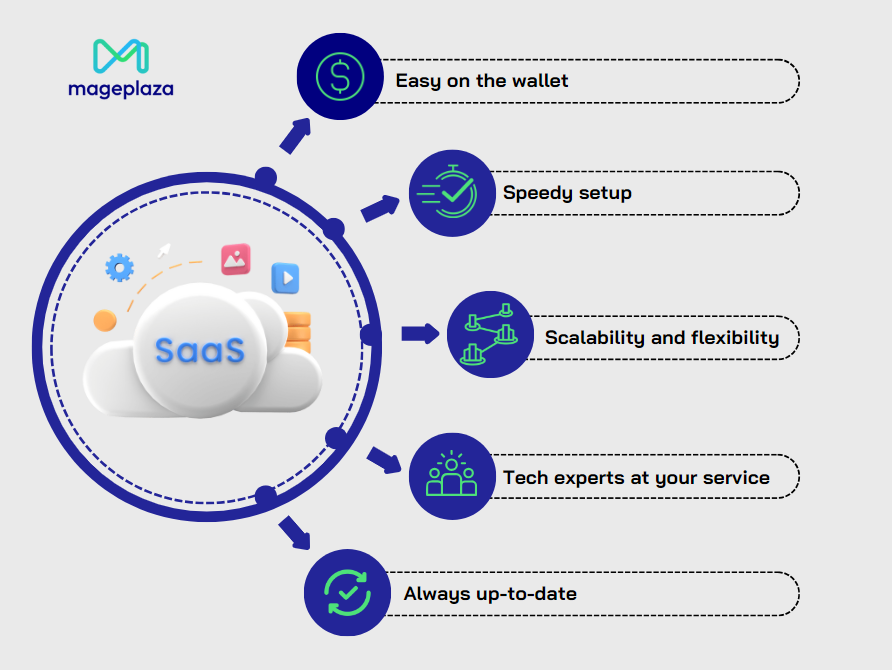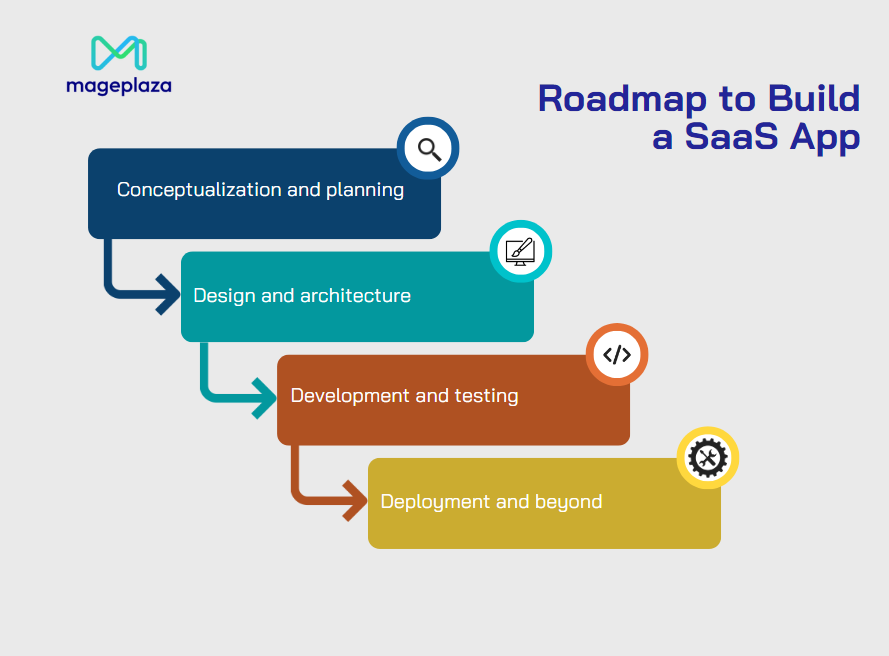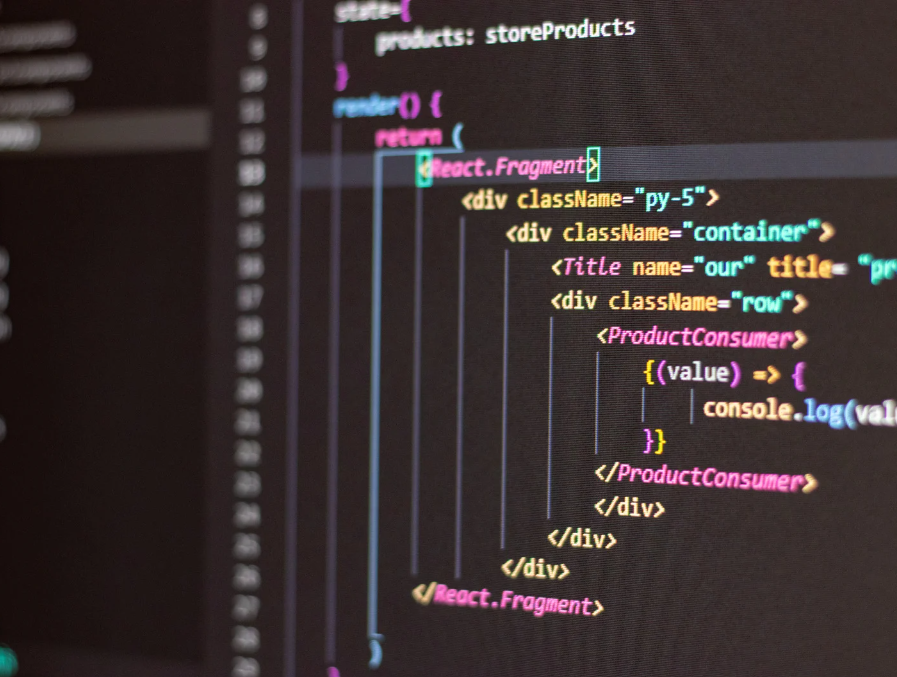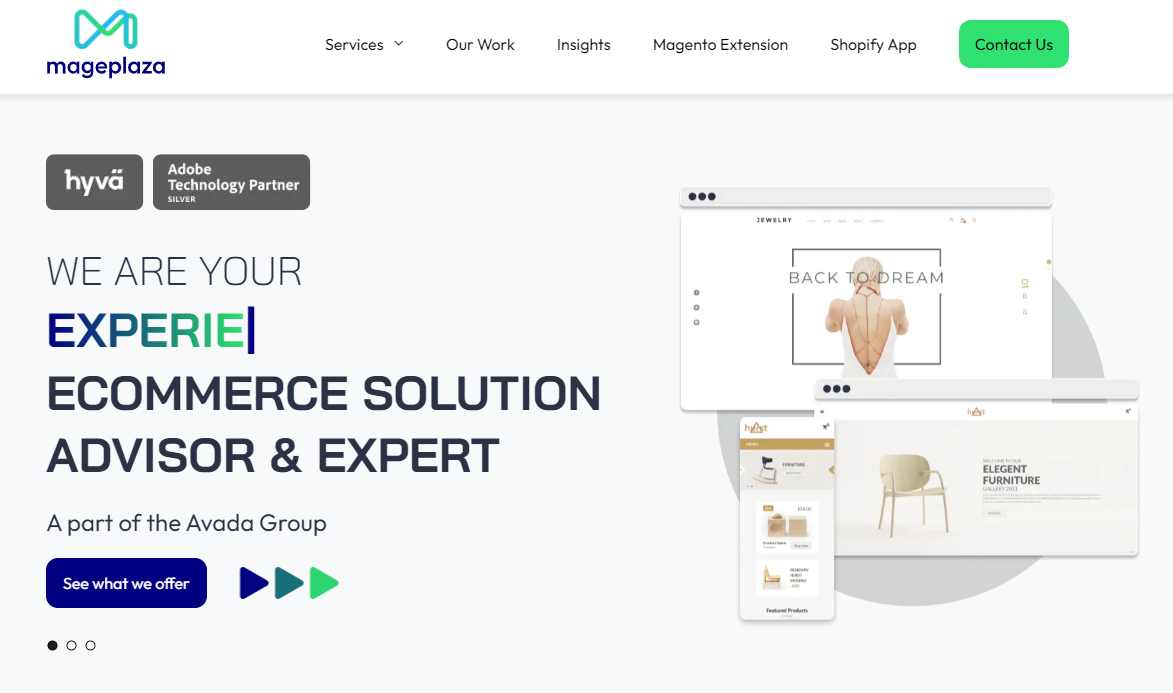SaaS Development: Definition, Models, Steps, and More
Summer Nguyen | 08-07-2024
Ever heard of software that lives in the cloud and makes your business life way easier? That’s SaaS, changing the game in the technology industry. Let’s dive into what SaaS is all about, how it can supercharge your business, and how you can even build your own. We’ll look at the good, the bad, and even some famous examples to get you up to speed. Ready to explore?
Understand Saas Development
What is SaaS (Example included)
Software as a Service (SaaS) refers to a cloud computing solution in which software is hosted and controlled by a service provider. Users can access it through an online subscription. Instead of installing and maintaining software on their own devices, users simply log in to the provider’s platform via a web browser or app.
A prominent example of SaaS is Salesforce, a leading customer relationship management (CRM) platform. Salesforce provides businesses with tools for managing sales, customer service, and marketing from a centralized online platform. Users can access their Salesforce dashboard from anywhere with an internet connection, facilitating collaboration and data accessibility across teams
Differences between SaaS and traditional software development
So, what is the difference between SaaS and traditional software development?
With SaaS, you can access applications through a web browser or mobile app and pay a subscription fee. The SaaS provider takes care of updates, maintenance, and infrastructure. This means you enjoy lower initial costs, easier scalability, and automatic updates without managing these aspects yourself.
On the other hand, traditional software usually requires upfront purchase and installation on your device or server. You’re also responsible for manual updates and maintenance. This often means higher upfront costs and the need for technical know-how to manage the software.
Let’s look at a brief comparison to illustrate the differences:
| Feature | Traditional Software | SaaS Development |
| Deployment | On-premises (user’s device/server) | Cloud-based |
| Delivery | Download/physical media | Web browser/mobile app |
| Maintenance | User responsibility | SaaS provider responsibility |
| Cost | Higher upfront costs | Subscription-based (lower upfront) |
| Scalability | Less flexible | More flexible |
| Updates | Manual | Automatic |
Type of SaaS application

Here’s a quick look at some of the major SaaS categories:
- Customer relationship management (CRM): These tools are all about helping you build and nurture relationships with your customers. Popular examples include Salesforce and HubSpot.
- Enterprise resource planning (ERP): If you’re looking for a way to streamline your entire business operation, an ERP might be the answer. They bring together different aspects of your company, like finance, human resources, and inventory management, into one unified system. Big names in this space include SAP and Oracle NetSuite.
- Accounting & finance: These are the go-to solutions for managing your company’s financials. They can handle everything from invoicing and payroll to expense tracking, making tax time a breeze. QuickBooks and Xero are popular choices here.
- Project management: If you’ve got many moving parts to juggle, project management software can be a lifesaver. They help you plan projects, assign tasks, track progress, and collaborate with your team. Asana and Trello are great options to get you started.
- Human resources (HR): HR software eliminates the hassle of managing your workforce. BambooHR and Workday are popular choices in this category.
- Marketing automation: These SaaS tools can help you automate repetitive tasks like email campaigns, social media posting, and lead nurturing. Mailchimp and Marketo are well-known players in this field.
- E-commerce platforms: These tools provide the infrastructure to build your online store, process payments, and manage your inventory. Shopify and BigCommerce are popular choices.
- Communication & collaboration: These tools make staying connected with your team easy. They offer real-time messaging, video conferencing, and document sharing, all in one place. Slack and Microsoft Teams are the heavy hitters here.
- Content management systems (CMS): Got a website? A CMS can help you easily post, edit, and publish content without needing to know any code. WordPress and Drupal are the most widely used options.
How Can SaaS Benefit Your Business?

Let’s break down how SaaS (Software as a Service) can make a big difference for your business. Here are five key benefits that you’ll want to consider:
- Easy on the wallet: With SaaS, you pay a regular subscription fee (monthly or annually) for what you actually use. This makes budgeting a breeze and lets you invest your money elsewhere.
- Speedy setup: Traditional software can be a pain to install – it takes time and technical know-how. SaaS is ready to go whenever you are. It’s like having a software expert do all the setup for you. This means you can start using it and see results much faster.
- Scalability and flexibility: Your business isn’t static, and neither is SaaS. It’s designed to scale with you. Need more users? No problem. More storage? Easy. Expanding to new locations? SaaS can handle it. You just pick the features and the level of service you need, and you can adjust as things change.
- Tech experts at your service: With SaaS, your provider takes care of everything. It’s like having your own IT department but without the extra cost. You get the latest features as well as security updates automatically, so you can focus on running your business.
- Always up-to-date (and secure): SaaS providers constantly work behind the scenes to keep your software running smoothly and securely. Updates happen seamlessly, often without you even noticing. This means less downtime for you and peace of mind knowing your data is protected.
What are Common SaaS Development Models?
Let’s break down the three common SaaS development models, each with its own pros and cons, so you can choose the best route for your journey:
Model 1: Building Your Own SaaS
This model is like crafting a custom-made suit – tailored perfectly to your needs and preferences. You’ll either assemble your own in-house team of developers or tap into your existing tech talent.
Let’s check the upsides and downsides of this model:
| Pros | Cons |
| Full control: You have complete control over the development process, allowing you to ensure that the final product meets all your requirements. | The price tag: Building your own SaaS app can be a hefty investment. You’ll need to cover salaries, benefits, equipment, and other overhead costs for your development team. Depending on the complexity of your app, expect to spend anywhere from $50,000 to $500,000. |
| Customization: You can build features and functionalities that are unique to your business, providing a competitive advantage. | Time-consuming: Developing a SaaS application from scratch takes time. It can take several months to years to bring your product to market. |
| You own it: The intellectual property is all yours. You have complete freedom to modify, enhance, and monetize your app however you see fit. | Resource-intensive: Managing an in-house development team requires significant resources, including project management, quality assurance, and ongoing maintenance. |
Model 2: Partner with a development team
Partnering with a development team, such as a software development agency or consultancy, is another common model. This approach enables you to ultilize the expertise of experienced professionals without the need to build an in-house team.
Let’s assess the pluses and minuses of this model:
| Pros | Cons |
| Expertise: Development teams are often specialized in SaaS development and have a wealth of experience in building similar applications. | Less Control (But more guidance): You won’t have the same level of control as building in-house. However, a good development team will collaborate closely with you to ensure your vision is realized. |
| Faster time to market: With a dedicated team working on your project, you can typically bring your product to market faster than building it in-house. | Dependency: Your business may become dependent on the external development team for ongoing maintenance and updates. |
| Potential cost savings: While still an investment, partnering with a team can be more cost-effective than hiring your own developers. Costs can range from $30,000 to $300,000, depending on the project scope and the team’s location and expertise. | Intellectual property: To avoid potential disputes, ensure that the terms of your agreement clearly define ownership of the intellectual property. |
Model 3: White-Label solutions
White-label solutions involve purchasing a pre-built SaaS platform from a third-party provider and branding it as your own. This model is ideal for businesses that want to enter the market quickly without extensive development.
In a similar vein to the previous models, white-Label solutions come with benefits and drawbacks, such as:
| Pros | Cons |
| Speedy deployment: White-label solutions are the fastest way to get your SaaS app up and running. You can be in business in a matter of weeks! | Limited customization: White-label solutions offer less flexibility in terms of customization. You may be limited to the features and functionalities provided by the third-party platform. |
| Affordable: This is the most budget-friendly option since you’re not starting from scratch. The usual cost is between $10,000 and $100,000, depending on how much customization is needed. | Brand differentiation: It might be harder to stand out if other businesses are using the same white-label solution. |
| Reduced risk: Using a proven platform reduces the risk of technical issues and ensures a more stable product. | Ongoing fees: Recurring licensing or subscription fees from white-label providers may contribute to escalating costs as time goes on. |
Your Roadmap to Build a SaaS App
For a SaaS app using white-label solutions, branding is your main task. If you’re working with an outsourcing agency, just have a great idea ready. But if you’re doing it all in-house, you’ll need a detailed roadmap. Here’s a step-by-step guide to building your SaaS app!

Step 1. Conceptualization and planning
Every great app starts with a great idea, right? This first stage is all about dreaming big and making a plan. You need to grab a notebook (or open a digital one) and start jotting down answers to these key questions:
- The core idea: What problem does your app solve? Be as specific as possible. Is it simplifying project management, automating marketing tasks, or streamlining customer support?
- Target audience: Who will gain the most from using your app? Are you targeting small businesses, enterprises, or a specific industry? Knowing your audience is crucial for tailoring your app’s features and marketing.
- Market research: Dive deep into existing solutions. What are their strengths and weaknesses? How can your app be better or different? This research will help you refine your idea and make it stand out.
- Key features: What are the must-have functionalities of your app? Create a detailed list, starting with the core features that solve the main problem and then adding “nice-to-have” extras.
- Monetization strategy: How will you make money? Will you offer subscriptions, a freemium model with premium features, or something else? A clear revenue model is essential for your app’s sustainability.
Once the basic idea is clear, draft a project plan that includes timelines, milestones, and resource allocation. This plan will serve as a roadmap for your development process, ensuring that everyone involved understands their roles and responsibilities.
Step 2. Design and architecture

With your plan in place, it’s time to focus on design and architecture. This step is all about creating a user-friendly experience and setting up the technical framework.
- UI/UX design: Think of this as designing the layout of your dream house. How will users navigate through your app? What will the buttons and menus look like? You need to create wireframes (basic sketches) and mockups (more detailed designs) to visualize the flow and aesthetics. Remember, a user-friendly and visually appealing interface is key to attracting and retaining users.
- Technical architecture: This is like choosing the building materials for your house. What technology stack will you use? Some popular choices for SaaS apps include Ruby on Rails, Python/Django, Node.js, and React. But, it is important to consider factors like scalability (can your app handle a growing user base?), security (how will you protect user data?), and performance (how fast will your app be?). Moreover, you need to decide on the database structure and how different parts of your app (front end and back end) will talk to each other.
Step 3. Development and testing
This is the moment of truth – transforming design concepts into a fully functional app. Let’s explore the details:
- Backend development: Backend developers create the server-side logic that powers your app. They work with databases, APIs (Application Programming Interfaces), and cloud infrastructure to ensure your app can handle user requests, store data securely, and scale as needed.
- Frontend development: If the backend is the engine, the frontend is the body of your car – the part that users see and interact with. Frontend developers use HTML, CSS, and JavaScript (or frameworks like React or Angular) to create a visually appealing and intuitive user interface.
- Continuous integration and deployment (CI/CD): This is like having a well-oiled assembly line for your code. CI/CD automates code change processes, facilitating faster and easier deployment of new features and bug fixes.
- Testing, testing, and more testing: Don’t wait until the end to start testing! Test early and often throughout the development process. You can use a combination of unit tests (testing individual components), integration tests (testing how components interact), and end-to-end tests (testing the entire user flow). Moreover, automated testing tools can help streamline this process.
Step 4. Deployment and beyond

Your app is ready for its debut! But before you launch, take care of the following aspects:
- Deployment: This is where you prepare your app for the real world. It involves setting up servers, configuring security measures, and ensuring everything is in place for a smooth launch.
- Beta testing: Select a group of users to test your app in a live environment. Their feedback will help you catch any last-minute issues and make those final tweaks before the big day.
Now, it’s time to share your app with the world! After launching, to stay ahead of the competition, you’ll need to monitor its performance, listen to user feedback, and continuously update and improve it.
Choosing the Right SaaS Development Partner
When opting to develop your SaaS project with an outsourcing team, selecting the right agency is crucial for success. Here’s what to keep in mind:
- Expertise that matters: Seek out a partner with a proven history of building effective SaaS applications, especially one with expertise in your industry or niche. They’ll know the ropes, understand your unique challenges, and have the experience to deliver software as a service products that hit all the right notes.
- Modern tech stack: Your SaaS app needs a strong foundation. Look for a partner fluent in the latest technologies, frameworks, and development practices, such as Agile and DevOps.
- Open & transparent: Pay attention to how the agency communicates. Do they provide regular updates? Are they easy to collaborate with? Your partner should be responsive, provide regular updates, and work seamlessly with your team.
- Security focus: SaaS apps handle sensitive user data, so your partner should be obsessed with security. We suggest having robust measures in place to protect your app and your users’ information.
- Scalability Expertise: As your user base grows, your SaaS platform needs to adapt. It would be better to choose a partner who understands scalable architecture and can ensure your application thrives under increasing demands.
Now, you might be wondering, “Where do I find this dream team?” Let me introduce you to Mageplaza.
We’re a leading development company with a proven track record of delivering top-notch, scalable, and innovative solutions. Our team of dedicated developers, designers, and project managers is dedicated to helping businesses like yours achieve their SaaS goals.

If you’re ready to bring your SaaS vision to life, let’s chat! We’d love to discuss your project and see how we can help.
Success Stories of SaaS Development
Let’s dive into a couple of case studies that show how SaaS apps can revolutionize the way businesses operate and boost productivity:
1. Dropbox
Remember the days of lugging around USB drives and struggling to share large files via email? Dropbox swooped in and changed the game! Launched in 2007, this cloud-based storage superstar has made file management a breeze for businesses. With Dropbox, all your files are neatly organized in the cloud, accessible from any device, anytime, anywhere. No more lost files, no more email attachment headaches – just seamless collaboration with colleagues, thanks to shared folders and file versioning.
Plus, Dropbox integrates well with other popular tools, such as Microsoft Office and Google Workspace, making it a one-stop shop for document management.

2. Slack
Launched in 2013, Slack burst onto the scene and has become a leading platform for team collaboration, offering real-time messaging, file sharing, and integrations with numerous other tools and services.
Moreover, Slack replaces the endless back-and-forth of emails with organized channels for different projects or topics. This keeps conversations focused and makes it easy to find information later.
But Slack’s not just about chat; it connects with several other tools, like Google Drive, Trello, and Zoom, creating a central hub for all your work. This means less time switching between apps and more time getting things done.

Recap
SaaS isn’t just a trend; it’s a transformative tool that offers unmatched benefits for businesses of all sizes. Whether you’re dreaming of building a custom solution, collaborating with a development team, or leveraging a pre-built white-label platform, SaaS empowers you to streamline operations, cut costs, and boost productivity. With a well-defined roadmap and a knowledgeable partner like Mageplaza, your SaaS app could be the next big success story, joining the ranks of industry giants like Dropbox and Slack.






![Top 20+ Must-have Shopify Apps for 2025 [Free & Paid] - Mageplaza](https://cdn2.mageplaza.com/media/blog/must-have-shopify-apps/top-must-have-shopify-apps.png)
![[2025 Updates] Top 10+ Upsell Apps for Shopify - Mageplaza](https://cdn2.mageplaza.com/media/blog/best-upsell-shopify-app/cover.png)